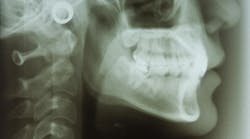The importance of adding oral cancer screenings to routine dental exams
Many people are surprised to learn that oral health issues can be an indicator of an individual’s overall health and that problems in the mouth can affect other parts of the body. While we traditionally dedicate April as Oral Cancer Awareness Month,1 dental and medical professionals throughout the US should emphasize to their patients daily the importance of making oral cancer screenings part of the routine dental exam.
More about oral cancer … The dental hygienist’s guide to pathology in patients with oral cancer
The prevalence of oral cancer underscores the importance of regular screenings. Research from the Oral Cancer Foundation2 indicates that oral cancer cases in the US have increased nearly 50% in the last 10 years. In the US, there were more than 54,000 cases of oral cancer diagnosed in 2021, which was roughly four times more than the number of cervical cancer cases diagnosed in the same year.3
Oral issues that require medical attention
- Red, white, or dark discoloration of soft tissue in the mouth
- Ulcerations or sores that do not heal
- Any abnormality that easily bleeds when touched
- Difficulty speaking, chewing, or swallowing
- Swelling of the jaw
- Difficulty moving the jaw
- Tongue numbness
- Difficulty moving the tongue
- Ear pain
The good news: Early detection saves lives
Despite the alarming oral cancer statistics, the news isn’t all bad. Patients diagnosed with oral cancers have a survival rate as high as 90% when the disease is found in its early stages of development. This is why it is crucial for dental and medical professionals to encourage patients to regularly check for signs and symptoms of oral cancer and to contact their dentist or primary care physician if an oral abnormality persists for two weeks or longer.
More about oral cancer … Oral cancer: Are you asking the right questions?
For Amber Young, chief brand officer at Oral Cancer Cause,4 the day she elected to have an oral cancer screening on the advice of her dentist was a moment that changed her life. The results of the screening detected what was later determined to be stage 4 cancer that, if left undetected, would have been fatal.
“I wouldn’t be here if my dentist and her team didn’t care so much about their patients,” Young said. “I’m so thankful for my dentist—I love my dentist, she saved my life, and I advocate for her and her team.”
A leading culprit: Human papillomavirus
One of the leading causes of oral cancer is the human papillomavirus (HPV). More than 70% of oral cancers are associated with HPV-16 and HPV-18 subtypes.5 In the oral cavity, these HPV subtypes manifest primarily in the back of the throat, the base of the tongue, the tonsils, or the soft palate. There are approximately 130 versions of HPV, and HPV-16 is currently the leading cause of oral cancer.
Due to potential transmission of the virus to the oral cavity, it is highly recommended that individuals who have tested positive for HPV have regular screenings for oral cancer. Other key factors that can increase the risk of oral cancer include tobacco use of any kind, heavy alcohol consumption, excessive sun exposure to the lips, and a weakened immune system. Additionally, individuals who are overweight and those ages 40 and older are at a higher risk of oral cancer.
More about oral cancer and alcohol … Increase in oral dysplasia and oral cancer rates due to COVID-19 alcohol-related consumption
It’s important to note that other illnesses, such as diabetes, HIV, osteoporosis, and Alzheimer’s disease, can cause oral conditions that include tooth decay and periodontal disease.
Screening for oral cancer in the dental practice
Dental professionals who are trained in the latest screening technologies can perform noninvasive tests to detect abnormalities in the mouth. Among the technologies used to detect oral cancer is a handheld scope that uses blue light to illuminate the natural fluorescence of oral tissue. This technology enables clinicians to identify abnormalities that may not have been apparent or even visible to the naked eye.
To increase early detection and treatment, private dental practices and dental service organizations (DSOs) that train their staff on available and emerging technologies to diagnose oral cancer will play a critical role in improving patient outcomes.
It takes everyone
The fight to raise awareness of oral cancer, increase early detection, and reduce mortality rates will require the efforts of everyone in the equation—dental professionals, medical professionals, and patients. With the goal of ensuring early detection through patient education and routine screenings, clinicians and advocates will continue to highlight the importance of oral care awareness—not just in April but always.
Editor’s note: This article first appeared in Through the Loupes newsletter, a publication of the Endeavor Business Media Dental Group. Read more articles and subscribe to Through the Loupes.
References
- Burger D. April marks Oral Cancer Awareness Month, with HPV-related oropharyngeal cancer on the increase. ADA News. March 20, 2023. https://adanews.ada.org/ada-news/2023/march/april-marks-oral-cancer-awareness-month
- Oral cancer facts. Rates of occurrence in the United States. The Oral Cancer Foundation. https://oralcancerfoundation.org/facts/
- Key statistics for oral cavity and oropharyngeal cancers. American Cancer Society. Updated January 18, 2023.https://www.cancer.org/cancer/types/oral-cavity-and-oropharyngeal-cancer/about/key-statistics.html
- Oral Cancer Cause. https://oralcancercause.org/
- HPV and oropharyngeal cancer. Division of Cancer Prevention and Control. Centers for Disease Control and Prevention. Updated September 12, 2023. https://www.cdc.gov/cancer/hpv/basic_info/hpv_oropharyngeal.htm
Misty Mattingly, BSDH, RDH, is the senior vice president and chief dental hygiene officer at Sage Dental. She is responsible for overseeing operations and managing a team of more than 150 hygienists across the company’s almost 100 supported practices. She continues to be a strong advocate for advancing the use of innovative technology in the dental field and expanding access to dental care regardless of socioeconomic and geographic barriers. Mattingly serves as vice president of the Georgia Board of Dentistry.
About the Author
Misty Mattingly, BSDH, RDH
Misty Mattingly, BSDH, RDH, is the vice president of hygiene operations at Sage Dental. She is responsible for overseeing operations and managing a team of more than 150 hygienists across the company’s 85 practices. She is dedicated to advancing the use of innovative technology in the dental field, including artificial intelligence and teledentistry. Mattingly is the past president of the Georgia Dental Hygienists’ Association and past delegate for the American Dental Hygienists’ Association.
Updated December 14, 2022

